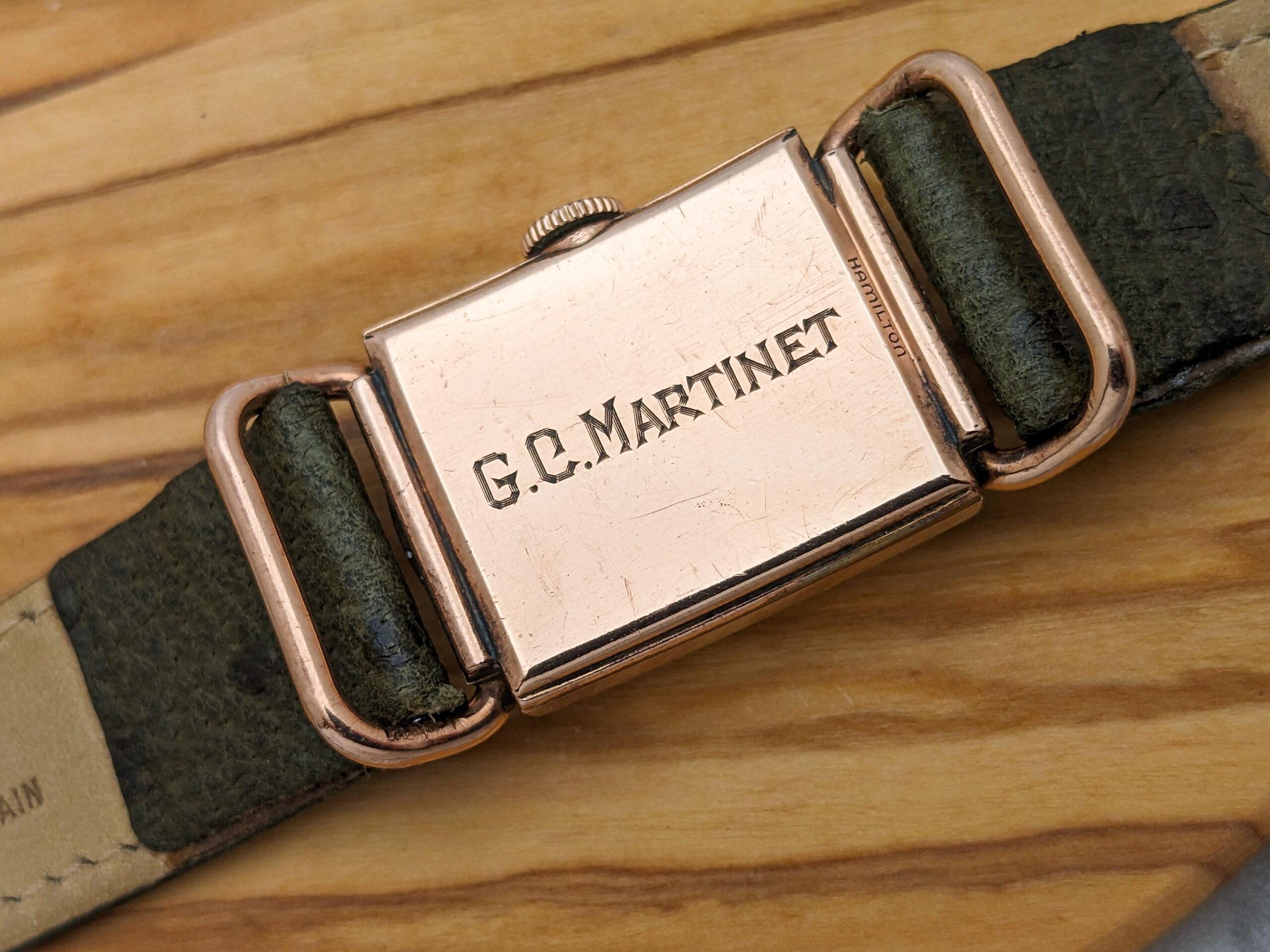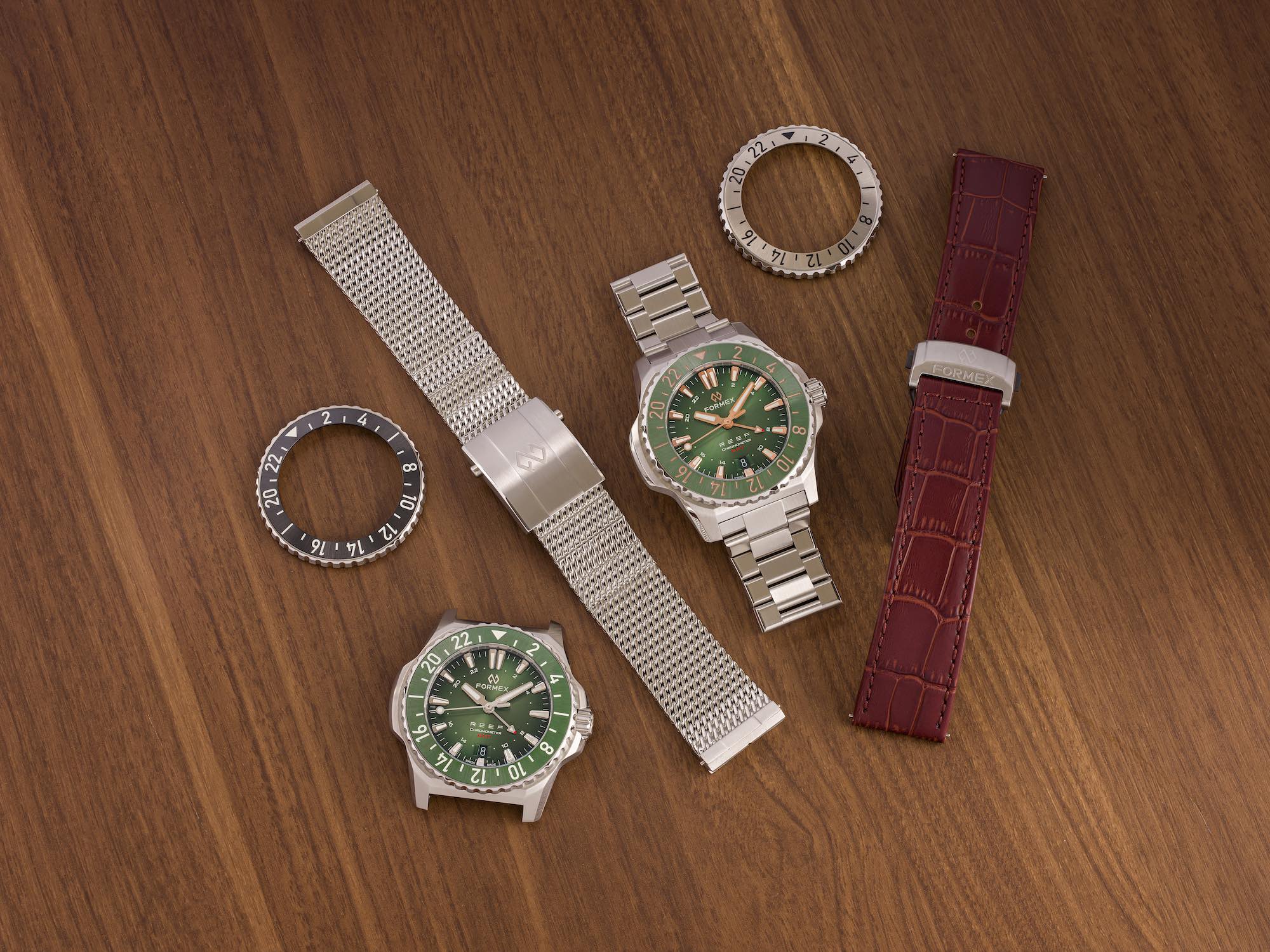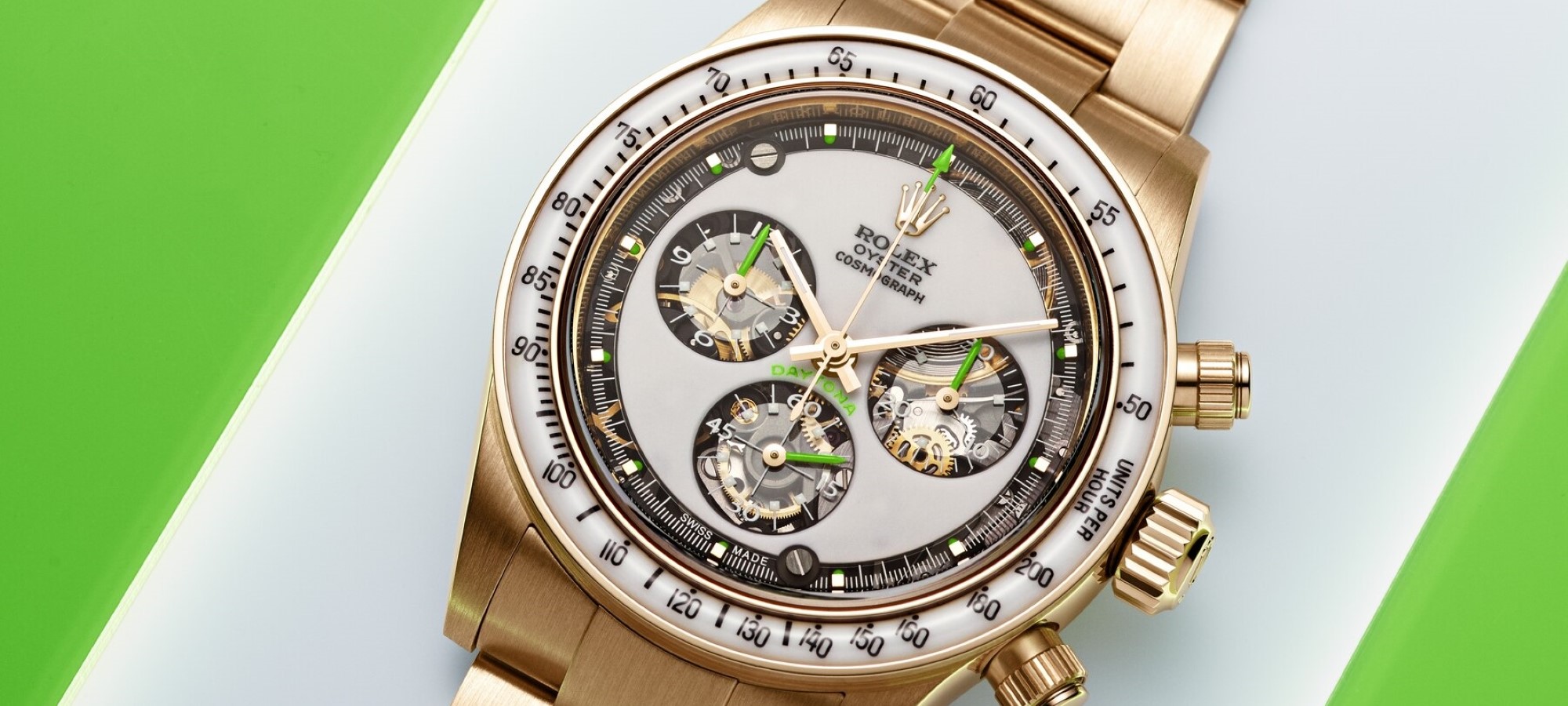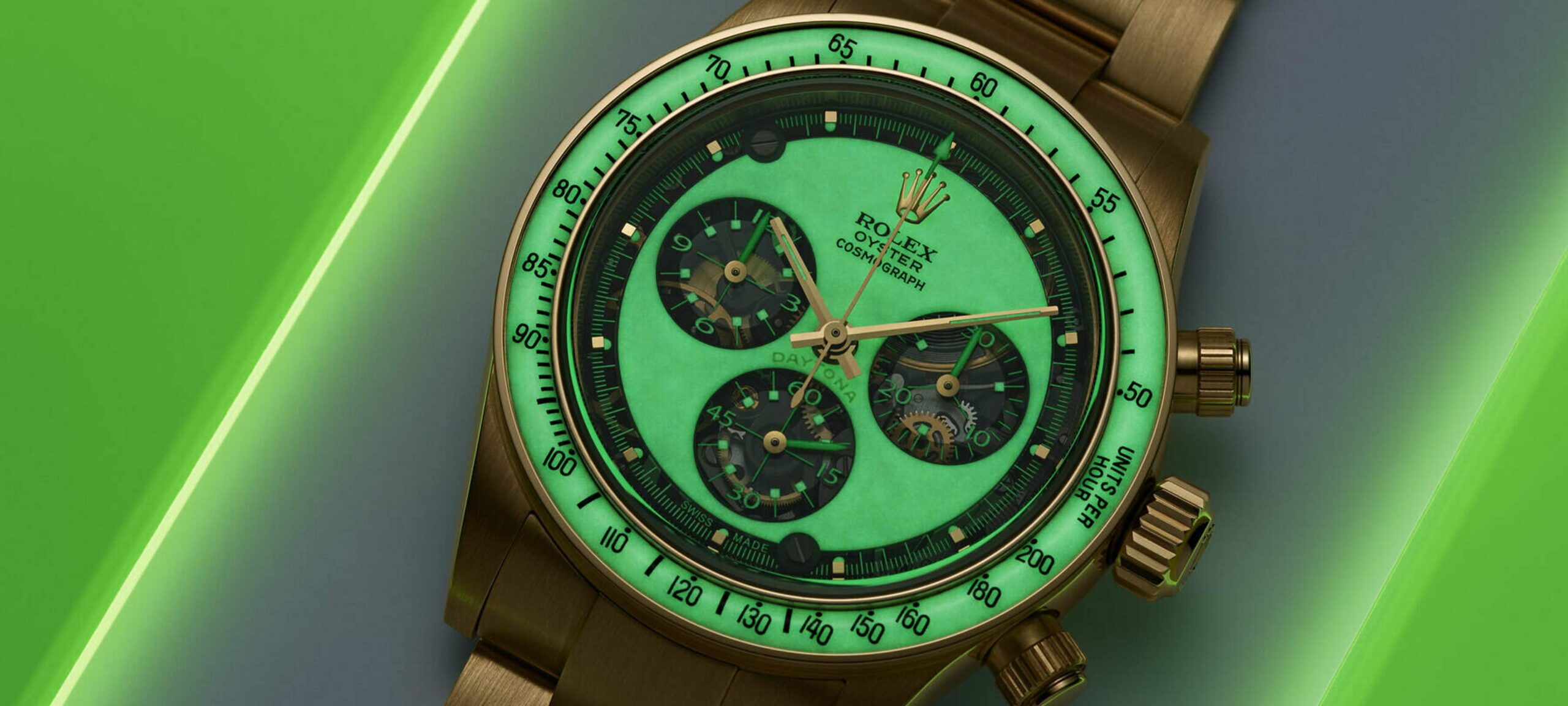One of the most interesting trends in wristwatch selling these days is the tendency for companies to offer customization opportunities to those buying new timepieces via online “configurator” tools. These product choice offers are so varied that no one term can really encapsulate them. And depending on who you ask, you’ll get a different opinion of what customization even means in regard to ordering a bespoke timepiece. For the purposes of this article, customization services refer to the ability of a consumer to order a new watch while selecting from certain available options prior to that watch being made or shipped out, resulting in a custom combination of components and a bespoke timepiece. These days such services start from just a few hundred dollars to hundreds of thousands of dollars (or more).
 Before talking about how these custom watches are made, let’s step back a bit and discuss the role such services have historically played in the watch industry. Going back to the beginning of the watch industry several hundred years ago, all watches were bespoke because they were made one at a time for wealthy clients. It was natural to ask customers what type of decoration or materials they wished for given that each piece could take months to produce and thus came with very high prices and equally high levels of exclusivity. It was not until the 19th century that anything resembling mass-produced watches began to take form and timepieces went from being exclusively for the most privileged to being affordable to the masses. In fact, the mass production of timepieces really began in the United States, and only later did Switzerland, otherwise a very “traditional” watchmaking country, follow suit.
Before talking about how these custom watches are made, let’s step back a bit and discuss the role such services have historically played in the watch industry. Going back to the beginning of the watch industry several hundred years ago, all watches were bespoke because they were made one at a time for wealthy clients. It was natural to ask customers what type of decoration or materials they wished for given that each piece could take months to produce and thus came with very high prices and equally high levels of exclusivity. It was not until the 19th century that anything resembling mass-produced watches began to take form and timepieces went from being exclusively for the most privileged to being affordable to the masses. In fact, the mass production of timepieces really began in the United States, and only later did Switzerland, otherwise a very “traditional” watchmaking country, follow suit.
Once mass-produced watches became popular, bespoke watches became less common. Instead, watches were “personalized” with names or brands, often after they were finished. Only the wealthiest (or well-connected) clients could order entirely original watches or those that required novel parts to be produced. Personalized watches as gifts and items of importance were extremely popular in the 20th century, but for the most part, the customization opportunities available were case and dial engravings or printing.

Such mainstream watch personalization services were rarely performed by the watch factory itself and were often applied after the sale by a jeweler or retailer. Many jewelers, for instance, have machinery to engrave a customer’s name or special message on the metal caseback of a watch. These services probably remain somewhat popular but rarely garnered too much interest from watch collectors. There are a few reasons for this, including that watch collectors sometimes like to sell or trade timepieces. A watch with your initials on it will have a very limited market outside of your family. Until at least recently, watch customization services have been an important but tangential element of watch collecting and enthusiasm.
Flash-forward to today and the world of customizable watches looks almost nothing like it did in the history of the watchmaking world. Thanks to modular watch case construction, software product configuration tools, novel materials and production techniques, and the desire for more relatable designs, consumers have a dizzying array of options when they want to purchase a timepiece that is more distinctive than those worn by others. If anything, the appeal of watch customization appears to be the enduring desire for consumers to not only have something that represents their personality but also is a product that no one else has.

These highly democratic customization tools out there are available for watches costing around a few hundred dollars up to a few thousand dollars. They are mostly powered by Internet-delivered configurator tools and are based on the fact that modular construction and rapid assembly allow brands to mix and match parts to help consumers choose styles they most admire (or that seem fashionable to them at the time). This does not necessarily represent some of the options that are available on the highest end of the price spectrum, as the market always offers deeper levels of customization to those who are willing to pay for it.
If money is no object to you, then your imagination is the limit for watch customization. It is very much a fact that many of the world’s most respected and conservative watchmakers have been doing such work in a discreet manner for years. Cartier, Vacheron Constantin, Audemars Piguet, Bovet, Roger Dubuis, Blancpain, Patek Philippe, and many other major brands have “secret” (or very inconspicuous) bespoke watch creation services that have been around for years. These are anything but “affordable” or straightforward, in most instances. They require long discussions with brands, lots of back and forth, and the costs associated with a lot of human attention and one-off manufacturing (brands will not develop a new movement unless a client is willing to spend in the millions of dollars). If you really want the watch of your dreams, someone out there today will make it for you, though it is important to appreciate that it can cost millions of dollars and require years of waiting. Most of these brands will not even consider bespoke watch projects for under five-figure prices. That, however, is quickly starting to change.

The commissioned Vacheron Constantin 57260 is the most complicated watch ever made, with 57 complications.
The real innovation in customized watches is in fact the internet’s ability to deliver a software configuration tool to the end consumer while doing business with that consumer at the same time. This allows customers to do a lot of the decision-making themselves, making the brand’s role one of offering choice. This comes with some notable minuses.
The major minus is that most consumers are painfully uncomfortable making watch customization choices (as they are in making other creative or “taste” decisions). It might be one thing to decide if you want your initials on the back of your watch, but it is another thing to make decisions about colors and materials, especially when you can only see them in digital renders. Indeed, the biggest issue with the watch customization trend is that most consumers simply aren’t confident enough to make choices for what is often an expensive decision (and who can blame them?). Having a middle person (such as a sales agent) to help consumers make choices about their options is still important when it comes to enabling a large percentage of the potential sales out there for consumers who rightly expect their hands to be held. What ends up happening, in my experience, is that only the most experienced and confident consumers tend to comfortably customize watches for themselves absent any help. Even then, buyers still like the reassurance from another human (even a commissioned human) that they are making a good decision.
Nevertheless, watchmakers are romanced by the idea that consumers will use automated configurator tools to make watch purchase decisions absent much or any human intervention. Once an order is made all that company needs to do is assemble and ship out the watch. This was once a months-long prospect, but more recently, customized watches can be ordered, assembled, and shipped within weeks. That is another of the major innovations we’ve seen when it comes to watch customization: the turn-around times have been reduced markedly, as have the logistical obstacles necessary for watch brands to offer customization/configuration services.
Deep levels of watch customization still require significant levels of brand and consumer interaction. If you want to purchase a watch with a hand-painted dial of a scene or image of your choosing, then it can be a challenge to order something so detail-oriented in an automated manner. Brands have tried this and find that when it comes to actual custom or bespoke watch elements (such as decorated or painted dials), it still requires a healthy amount of interaction with the consumer. Brands are finding more success by using online configurator tools to help customers assemble watches using modular parts.
First though, some context once again as to why more optimized means of production volume matter economically to the watch industry. One of the best things about the wristwatch industry is the aesthetic variety of watches it produces each year. Even the same models are often available in an array of sizes, colors, materials, etc. Historically, watch brands have always juggled the economics of producing too much timepiece variety versus the penalties of missing out on clients who will only buy a watch in one particular material or color. This resulted in a massive over-production of watches that flooded markets with too many timepieces that were not being sold to consumers. Again, this is related to the fact that traditional manufacturing techniques require minimum production volumes. If a marketplace really only wants 100 of a particular watch configuration, it was often the case (for example) that a company needed to produce 1000 minimum pieces given the realities of production. These days, the manufacturing world is increasingly agile, being able to get away with more clever techniques to keep production levels low and continue to allow for economies of scale.

One clever technique to manage economies of scale in wristwatch production is the newer trend for watch brands to order a large number of parts but not actually assemble those parts into a watch until orders are made. In a world where consumers buy directly from brands, and when orders can be facilitated by the Internet, this is becoming increasingly practical for more timepiece makers. Consumers do benefit as a result. They benefit by being able to select the particular parts (colors and materials) they want in their own watch, which is assembled and shipped only after a purchase has been made. Again, this process could have taken months if not years in the past. Given today’s connected technology, a customer can order a timepiece, have it assembled, and then receive it in mere weeks (or even days) after purchase.
The appeal of providing wristwatch configurator tools online to consumers appears to be increasingly popular with even traditional luxury watchmakers. A few years ago, companies like Bamford Watch Department were a rarity in offering a tool that allowed people to purchase extremely expensive after-market customized Rolex watches. But today, British brand Bremont has also joined the online configurator tool bandwagon. You can, however, configure a watch from Formex, Swatch, or Swiss Army Victorinox online. Hong Kong-based UNDONE launched in 2015 with one of the most robust online configuration tools ever available. It even allows consumers to design their own dials. (That service has been taken down at times given the inability of the brand to meet demand.) UNDONE spurred a number of Hong Kong-based small brands to launch their own versions of the customized watch concept.

Back in Switzerland, the Europeans are quickly jumping on the online watch configurator tool option with gusto — even at brands many would not expect. This doesn’t mean that all of their watches can be customized, but at least one flagship product at a lot of companies is regularly being touted to Internet audiences. Recently, brands like Piaget have jumped on board with a robust configurator tool, while smaller brands like Armin Strom and Alpina have been offering their own for over a year now. Porsche Design even launched one earlier this year.
Critics will point out that configurator tools for luxury products aren’t anything new, and that having them Internet-powered doesn’t escape the fact that when most people buy luxury products, they like to imagine that someone else did all the challenging aesthetic work for them. The truth is that many consumers are not nearly as refined in their taste as the creative director or product manager at a luxury brand. Giving consumers who want to buy art an option of what their paintings might look like doesn’t necessarily increase art sales.
Some brands offer so-called customization tools that merely allow consumers to select from an unsatisfying limited selection of options. The worst-case scenario for a watchmaker is a configurator tool that too easily allows consumers to make something ugly. Consider the implications here. Brands want to keep consumers happy by offering them a robust series of customization options. At the same time, a misconfiguration of options can lead to a genuine luxury product that is also genuinely ugly. This is no laughing matter, and luxury bands take very seriously the fact that if their objects are meant to be socially seen, then that view should be a pretty one.

The unfortunate result of randomly selecting colors on the otherwise impressive Kieser tragwerk.t
It remains to be seen how brands refine online configurator tools to offer consumers choice, while also preventing consumers from unwittingly harming brand standards by deciding that Frankenstein’s monster should be assembled to live on their wrist. In my opinion, a solid argument can be made that a lot of brands should avoid offering consumers configurator tools and instead leverage a modular watch case construction to create small batches of different flavors of the same product. This is the exact formula used by many watchmakers today when it comes to their limited-edition pieces. Many of these are simply a different assortment of modular parts that allow watchmakers to dress up the same design in a variety of outfits. A tasteful design selected by the brand itself is often going to be more marketable than giving picky consumers the ability to make a several-thousand-dollar product customization decision without even being able to see an example of what they are purchasing outside of a rendering in the configurator.
Watchmakers like the idea of online watch configurators because they believe it can help them reach consumers directly, offer meaningful aesthetic choices, and remove inefficiencies from traditional production volumes. The problem is that no watchmaker has yet to keep the lights on with the income from configured watches. Instead, the companies that sell watches via online configurators rely, for the most part, on more traditional production techniques to pay the bills. The dream of a “watch sales ATM machine” in the form of an online configurator tool still requires a lot of tweaking and is not an automatic success for many of its current believers. To be sure, there is fun to be had with some of the online configurators out there — especially the under-$1,000 options — but it is caveat emptor, as there still isn’t a configurator that will tell you whether or not a design actually looks good.


